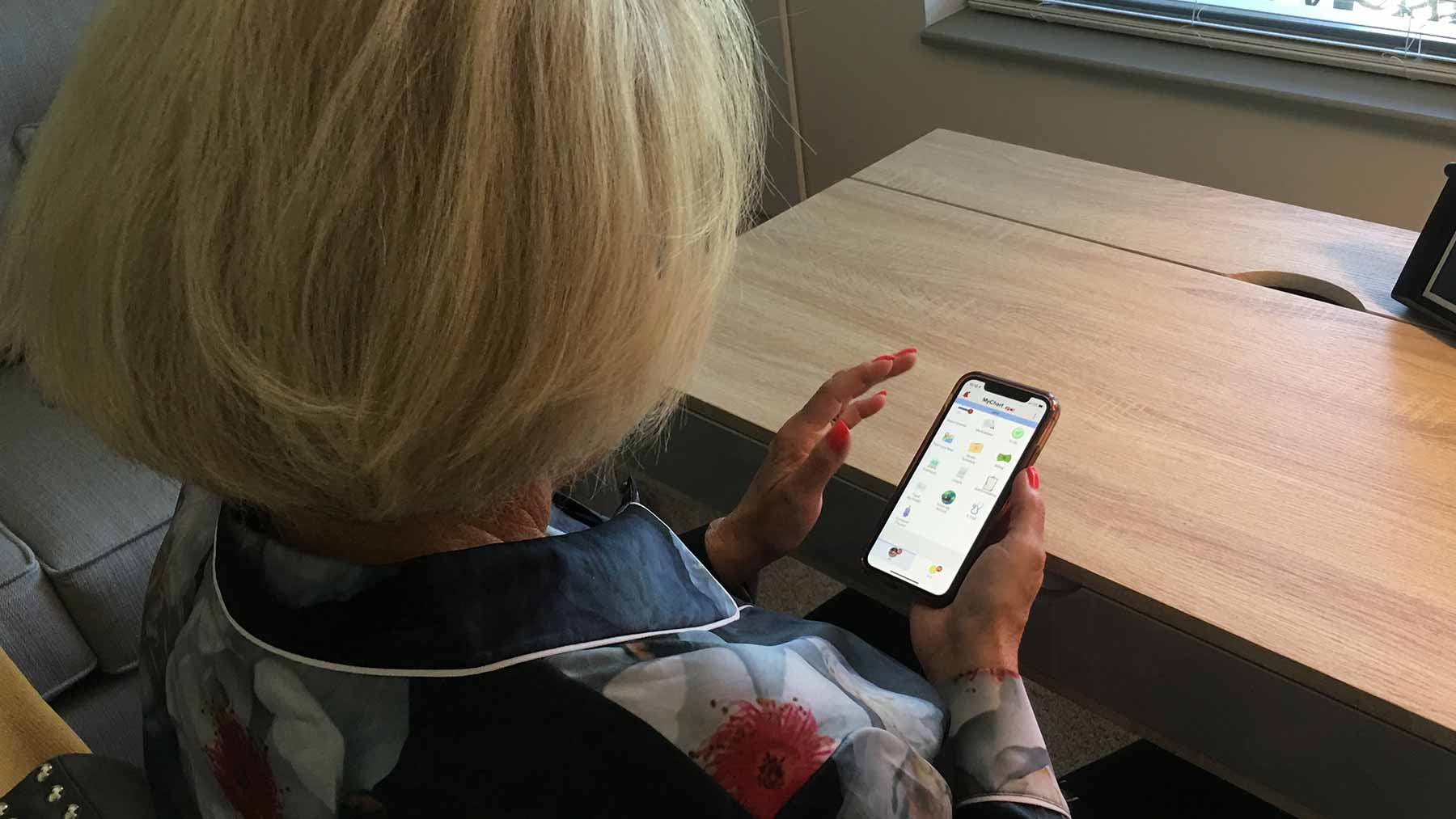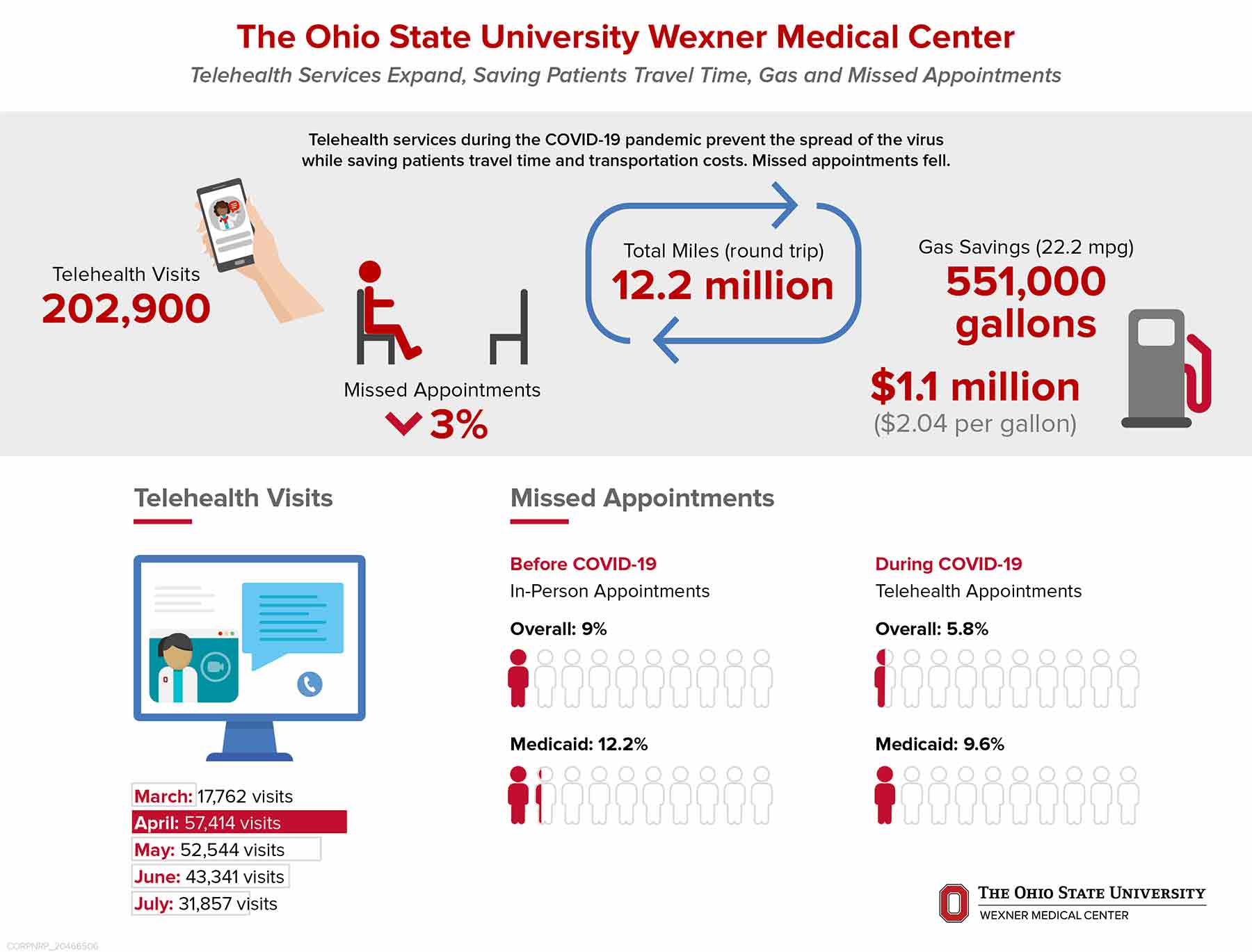August 31, 2020

COLUMBUS, Ohio – The accelerated growth in telehealth services at the start of the COVID-19 pandemic saved patients travel time and money, according to new data from The Ohio State University Wexner Medical Center. It also reduced the rate of missed appointments, which adversely impacts patient health and physician practice operations.
Telehealth visits at Ohio State Wexner Medical Center went from 96 in February to a total of more than 202,900 from March through July. This resulted in patient travel distance savings of 12.2 million miles and 551,000 gallons of gas or approximately $1.1 million in fuel costs. Missed appointments dropped 3%.
“Ohio State adopted an aggressive telehealth strategy, and we are diligently pursuing plans to maintain telehealth as a significant part of the continuum of care we provide,” said Dr. Hal Paz, executive vice president and chancellor for Health Affairs at The Ohio State University and CEO of the Ohio State Wexner Medical Center. “We recognize the value of accessing health care in your home. By harnessing the power of digital and mobile technology, we can personalize the health care experience and provide Ohio State’s innovative care to even more patients.”
Ohio State is a destination academic medical center caring for patients throughout the country and around the world. However, prior to the COVID-19 pandemic, telehealth patients were required to be physically located in the same state as their medical provider. When the U.S. Department of Health and Human Services lifted restrictions on doctors and medical professionals practicing across state lines, patients accessed Ohio State health care via telehealth from all 50 states and the District of Columbia.
The majority of telehealth patients who received care during this time period reside in Ohio and account for 98% of visits. Ohio patients saved 9.2 million miles in travel and more than 415,000 gallons of gas or roughly $830,000 in fuel costs. Telehealth services are offered in primary care and more than 60 specialties and subspecialties at 65 locations.
“There is no better place than Ohio State to create this opportunity for improving health outcomes with a more efficient, more personalized and more caring system,” Paz said. “By bringing virtual care and digital services into people’s homes, we can transform from a health care system into a health care platform that delivers unparalleled care.”
Ohio State experienced improvements in the rate of missed patient appointments, especially among the Medicaid patient population. Before the pandemic, the overall no-show rate for in-person visits was 9% and 12.2% for Medicaid patients. To date, the overall no-show rate for telehealth visits is 5.8% and 9.6% among Medicaid patients.
“Telehealth eliminates the barrier of transportation that keeps up to 3.6 million people from obtaining health care each year, according to the American Hospital Association,” said Dr. L. Arick Forrest, vice dean of Clinical Affairs at The Ohio State University College of Medicine and president of The Ohio State University Physicians Inc. and Faculty Practice Group. “This social determinant of health is evident in both urban and rural communities. Bringing vital health care services to our patients’ homes has the potential to improve compliance with care plans for chronic health conditions such as heart disease, diabetes and more in vulnerable patient populations.”
Patients are able to virtually access care at Ohio State in the following ways:
- Video visits between the clinician and the patient.
- Telephone visits between the clinician and the patient.
- Electronic visits between the clinician and the patient. The patient completes a detailed questionnaire about their medical history and current symptoms. The provider reviews the responses and will either determine a care plan or recommend a follow-up appointment.
“As patients safely return to in-office visits, we must also continue to offer telehealth services to maintain these benefits for our patients as we seek to offer high-quality health care in the most cost-effective and convenient way,” Forrest said.
###
Media Contact: Serena Smith, Wexner Medical Center Media Relations, 614-293-3737, Serena.Smith@osumc.edu

